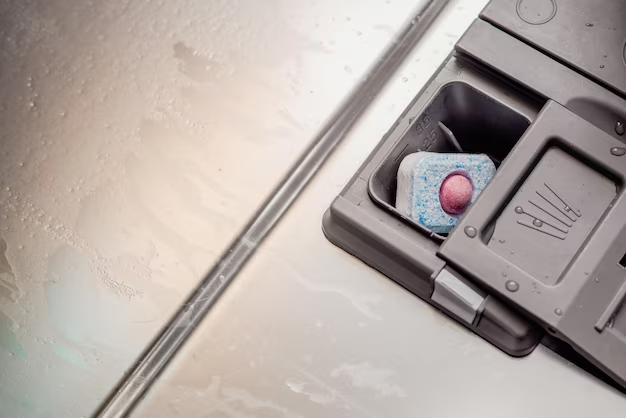Understanding Your Refrigerator's Compressor: A Complete Guide
When you open your refrigerator to grab a cold beverage or a fresh batch of vegetables, you probably don’t think about the inner workings of this essential kitchen appliance. However, at the heart of your refrigerator lies a key component responsible for keeping everything cool: the compressor. This guide demystifies the compressor, exploring how it functions, why it’s crucial, and what you can do to keep it in top shape.
🔍 Why is the Compressor Important?
The compressor is like the heartbeat of your refrigerator — it pumps refrigerant through the system, enabling the cooling process. Without it, your refrigerator would simply be a glorified cupboard. Let’s explore its key responsibilities:
- Circulating Refrigerant: The compressor compresses the refrigerant, turning it into a high-pressure gas, which then flows through the rest of the system to cool the fridge.
- Temperature Regulation: By adjusting the pressure of the refrigerant, the compressor helps maintain optimal temperatures for food preservation.
- Energy Efficiency: Advances in compressor technology can significantly reduce energy consumption, contributing to greener, more cost-effective refrigeration.
🛡️ Anatomy of a Compressor
How It Works
- Compression: At its core, the compressor takes in refrigerant gas and compresses it. This raises the temperature and pressure of the gas, preparing it for the next stage.
- Condensation: Once compressed, the refrigerant moves to the condenser coils outside the fridge, where it cools and turns into a liquid. This process releases heat that’s vented outside.
- Evaporation: The liquid refrigerant travels to the evaporator coils inside the fridge. Here, it expands and evaporates, absorbing heat from the interior, which lowers the fridge’s temperature.
- Repeat: The cycle repeats, continually keeping your fridge cool and your food fresh.
Components
- Motor: Powers the compression process.
- Piston or Rotary Blades: Depending on the type of compressor, these components compress the refrigerant.
- Condenser Coils: Release heat from the refrigerant.
- Evaporator Coils: Absorb heat, cooling the fridge interior.
⚙️ Types of Compressors
1. Scroll Compressors
- Features: Quiet and efficient, scroll compressors use two interleaved spiral-shaped scrolls to compress the refrigerant.
- Best For: Consistent performance and energy efficiency.
2. Rotary Compressors
- Features: Use rotating blades to pressurize the refrigerant, known for their durability.
- Best For: Systems requiring lower capacity cooling with robust operational resilience.
3. Reciprocating Compressors
- Features: Employ a piston mechanism similar to an engine’s, tend to be louder but are reliable.
- Best For: Situations where durability is a priority over quiet operation.
🔧 Maintenance and Troubleshooting Tips
A well-maintained compressor prolongs your refrigerator’s life and saves electricity. Here’s how you can care for it:
- Clean the Coils: Dusty coils make the compressor work harder. Aim to clean them biannually.
- Check the Seals: A faulty door seal lets warm air in, causing the compressor to overwork.
- Monitor the Noise: A change in the compressor’s noise level can indicate issues. Listen for rattling or buzzing.
- Maintain the Temperature: Keeping the refrigerator temperature at the recommended settings helps lessen compressor strain.
Common Issues
- Overheating: Occurs if the compressor runs constantly, often due to poor ventilation or faulty parts.
- Frequent Cycling: If the compressor constantly turns on and off, it might be due to thermostat issues or inadequate refrigerant levels.
- No Cooling: Can be caused by compressor failure, refrigerant leaks, or problemenatic electrical components.
🔄 Enhancing Performance and Longevity
Smart Tips
- Regular Inspections: Schedule professional assessments annually to catch problems early.
- Adequate Ventilation: Ensure your fridge has 2-3 inches of space around it to ventilate efficiently.
- Load Management: Avoid overstuffing your fridge, as it makes the compressor work harder.
Innovations in Compressor Technology
Today’s compressors are designed with energy efficiency in mind, using inverter technology to adjust the cooling output based on the refrigerator’s needs, leading to significant energy savings and reduced noise.
📋 Key Takeaways
Below is a handy list of tips and insights to ensure your refrigerator's compressor operates efficiently and effectively:
- 🌡️ Maintain the Right Temperature: Keep your refrigerator at the recommended temperature to prevent overworking the compressor.
- 💡 Choose Energy Efficient Models: Consider models with inverter compressors for better energy savings and performance.
- 🔧 Regular Maintenance: Clean coils and inspect seals regularly to avoid compressor strain.
- 🔊 Be Noise Aware: Listen for unusual sounds that might indicate a problem.
- 🕵️♂️ Professional Check-ups: Annual inspections by a professional can prevent costly repairs.
- 🧊 Load Wisely: Don’t overfill your fridge; maintain space for air circulation.
By understanding how your refrigerator’s compressor works and taking a few simple steps to maintain it, you can ensure that your appliance remains efficient and effective. This knowledge empowers you not only to troubleshoot potential issues but also to appreciate the technology working quietly behind the scenes to keep your food fresh and your life convenient.
